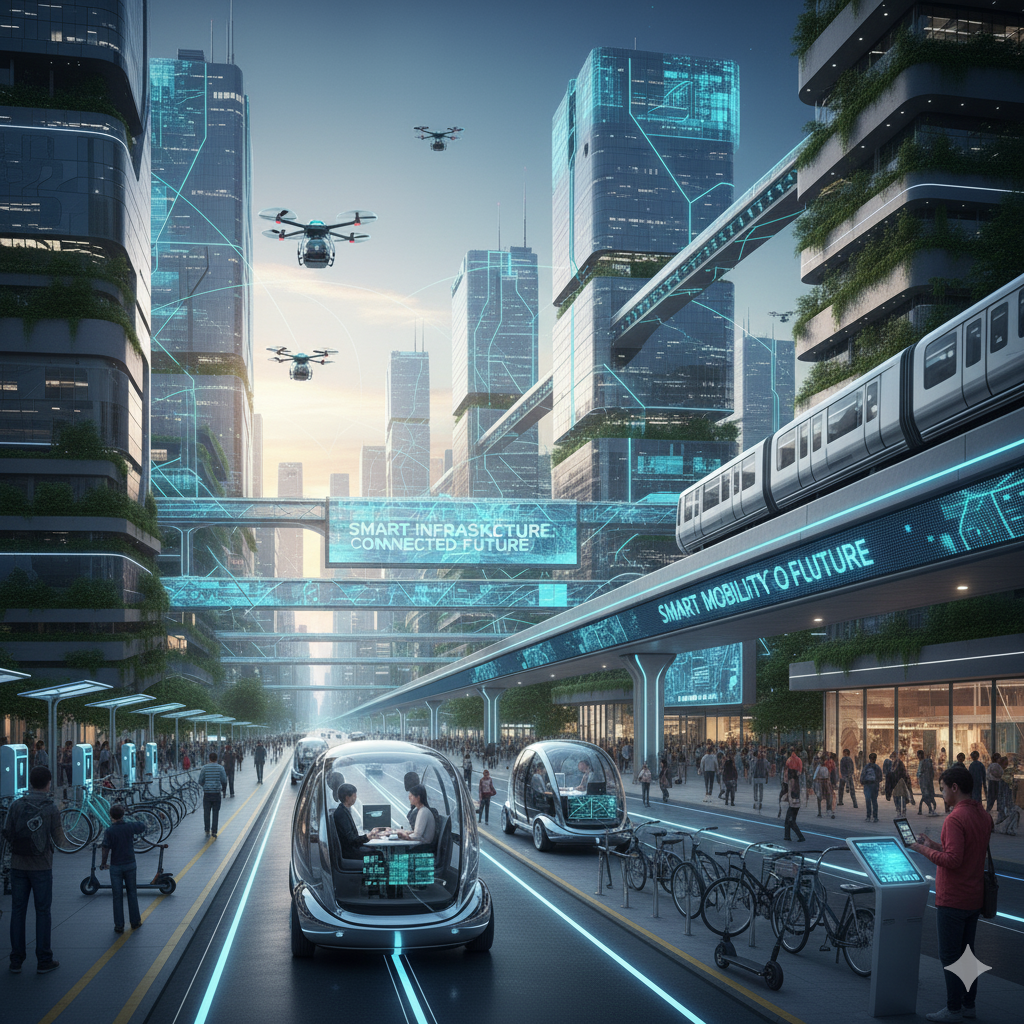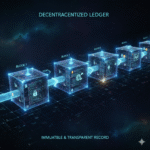Our cities are at a tipping point. As urban populations swell, the physical infrastructure built for the 20th century—our roads, power grids, and water systems—is groaning under 21st-century demand. The answer isn’t just to build more, but to build smarter. This is the promise of smart infrastructure, a revolutionary approach that leverages the powerful synergy of the Internet of Things (IoT) and Artificial Intelligence (AI) to create cities that are not just functional, but responsive, sustainable, and future-ready.
But what does this transformation actually look like? It’s a shift from concrete and steel to data and intelligence. It’s about creating a living, breathing urban environment that can sense, think, and act.
The New Urban Anatomy: IoT as the Senses, AI as the Brain
Think of a future-ready city as a living organism. For it to function, it needs two things: senses to understand what’s happening and a brain to decide what to do about it.
1. The Internet of Things (IoT): The City’s Senses The foundation of smart infrastructure is data. IoT provides the “senses” to collect it in real time. This isn’t just one type of sensor; it’s a vast, interconnected nervous system:
- Smart Pavement: Sensors embedded in roads detect traffic flow, identify open parking spaces, and even sense structural stress or icy conditions.
- Smart Bins: Waste bins equipped with sensors notify sanitation departments when they are full, optimizing collection routes to save fuel and time.
- Smart Grid: Meters and sensors on the electrical grid monitor energy consumption in real-time, instantly identifying outages and rerouting power to prevent blackouts.
- Environmental Sensors: Devices monitoring air quality, water levels in rivers, and even noise pollution provide a constant health check-up on the urban environment.
This network of devices generates an unimaginable flood of raw data. On its own, this data is just noise. The city can “sense,” but it can’t “think.” That’s where AI comes in.
2. Artificial Intelligence (AI): The City’s Brain If IoT sensors are the nerve endings, AI is the brain that processes all the signals and makes intelligent decisions. AI algorithms sift through billions of data points to find patterns, predict problems, and automate solutions.
- In Transportation: AI doesn’t just see traffic; it manages it. By analyzing data from road sensors and GPS, an AI-powered traffic management system can predict a traffic jam 30 minutes before it happens. It then proactively adjusts traffic light timing, suggests alternate routes to drivers via navigation apps, and even dispatches public transport to high-demand areas.
- In Energy: AI-driven smart grids don’t just report outages; they prevent them. AI predicts energy demand based on weather, time of day, and public events, then automatically balances the load. It can divert surplus solar power from one neighborhood to charge electric vehicles in another, drastically reducing waste and reliance on fossil fuels.
- In Public Safety: AI analyzes feeds from security cameras and acoustic sensors. In a city like Barcelona, smart sensors can detect the sound of a crash or a cry for help and automatically dispatch emergency services to the exact location, often before a 911 call is even made.
Beyond Efficiency: The “Future-Ready” Promise
This synergy does more than just fix today’s problems. It makes cities “future-ready”—a term that revolves around three core principles: efficiency, sustainability, and resilience.
- Radical Efficiency: Waste is the enemy of a modern city. Smart infrastructure attacks it at the source. Smart water systems use AI to listen to pipes, detecting the acoustic signature of a tiny leak and scheduling repairs before it becomes a catastrophic main break. This saves billions of gallons of water and cuts maintenance costs.
- Deep Sustainability: A truly smart city is a green city. When AI optimizes traffic, it cuts emissions. When it manages the power grid, it seamlessly integrates renewable energy sources like wind and solar. When it optimizes waste collection, it reduces the carbon footprint of sanitation fleets.
- Proactive Resilience: A future-ready city is one that can withstand shocks, from extreme weather to public health crises. By simulating potential disasters—like a flood or a power grid failure—AI can identify systemic weaknesses in advance. This allows urban planners to build stronger, more redundant systems that can bend without breaking.
The Human Element: Overcoming the Smart City Challenges
This high-tech vision is not without its pitfalls. A city that is “smart” is not automatically “utopian.” The transition to intelligent infrastructure brings critical human and ethical challenges to the forefront.
- The Privacy Paradox: A city that “senses” everything is also a city that “watches” everything. The same sensors that manage traffic can track individuals’ movements. The debate over data ownership, surveillance, and security is paramount. A smart city must be a secure city, with robust cybersecurity and transparent data policies that place citizen privacy first.
- The Bias in the Code: AI is only as good as the data it’s trained on. If historical data reflects past biases (e.g., police patrols in certain neighborhoods), an AI system can learn and even amplify these inequities. A “smart” policing or planning algorithm could end up unfairly allocating resources, marginalizing communities further.
- The Digital Divide: What happens to the elderly resident who doesn’t own a smartphone? Or the low-income neighborhood with poor internet connectivity? There is a profound risk of creating a “digital divide,” a two-tiered city where the benefits of smart infrastructure flow only to the affluent and tech-savvy.
The Path Forward: A Human-Centric Future
The solution to these challenges isn’t less technology, but more thoughtful implementation. The next generation of smart infrastructure, powered by innovations like 5G and Edge Computing, will provide the high-speed, localized processing needed to keep sensitive data from ever leaving the neighborhood.
The most powerful new tool, however, is the “Digital Twin”—a complete, virtual simulation of the entire city. Before building a new subway line or changing a traffic pattern, planners can test the idea in the digital world, seeing its impact on emissions, traffic, and even social equity.
Ultimately, smart infrastructure is not about technology. It’s about people. The IoT sensors and AI algorithms are merely tools. The true measure of a “future-ready” city won’t be the speed of its data, but the quality of life of its citizens. The goal is to build cities that use intelligence to become more efficient, more sustainable, and—above all—more equitable and human.


